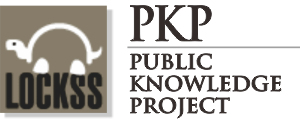Sekolah Tinggi Teologi Gereja Kristen Sumba, Sumba Timur - Indonesia
Google Scholar:
https://scholar.google.com/citations?hl=id&user=bpicVnYAAAAJ
Religious Harmony and Tolerance in Disruption Era: A Study of Local Wisdom in Watu Asa of Central Sumba
Intolerance has been a major concern in religious life in the disruption era. This current study aims to discuss local wisdom that has helped maintain religious harmony and tolerance in Watu Asa of Central Sumba. The study was qualitative and descriptive in nature, while the investigation was carried out through participatory observation on the dynamics of religious life and in-depth interviews with religious and traditional leaders in Watu Asa Village. The results of the investigation confirm that the three religious communities, i.e. Christians, Marapu, and Muslims, can coexist peacefully because of the local wisdom and strong kinship. The local wisdom embedded in the tradition of tana nyuwu watu lissi, palomai or palonggamai, kalli kawana kalli kawinni, pandula wikki, mandara, and paoli, promotes the values of love, respect, mutual cooperation, and acceptance of one another. Those values are believed to be a social cohesion that interconnects interreligious people, regardless of their geographical, ethnic, and gender differences. Taken together, these results highlight the importance of the values of local wisdom as counter-narratives against intolerant religious ideology.
Keywords: disruption era; harmony; local wisdom; tolerance
- Bhandari, H., & Yasunobu, K. (2009). What is Social Capital? A Comprehensive Review of the Concept. Asian Journal of Social Science, 37(3), 480–510. https://doi.org/10.1163/156853109X436847
- Coleman, J. S. (1988). Social Capital in the Creation of Human Capital. The American Journal of Sociology, 94, S95–S120.
- Côté, J. E. (2005). Identity Capital, Social Capital and the Wider Benefits of Learning: Generating Resources Facilitative of Social Cohesion. London Review of Education, 3(3), 221–237.
- Durkheim, E. (1995). The Elementary Forms of Religious Life. New York: The Free Press.
- Durkheim, E. (2014). The Divison of Labour in the Society. New York, London, Toronto, Sydney, New Delhi: Free Press.
- Eko, B. S., & Putranto, H. (2019). The Role of Intercultural Competence and Local Wisdom in Building Intercultural and Interreligious Tolerance. Journal of Intercultural Communication Research, 48(4), 341–369. https://doi.org/10.1080/17475759.2019.1639535
- Field, J. (2008). Social Capital. Canada: Routledge.
- Forrest, R., & Kearns, A. (2001). Social Cohesion, Social Capital and the Neighbourhood. Urban Studies, 38(12), 2125–2143. https://doi.org/10.1080/00420980120087081
- Haba, J. (2007). Analisis Swot Kearifan Lokal dalam Resolusi Konflik. In Revitalisasi Kearifan Lokal: Studi Resolusi Konflik di Kalimantan Barat, Maluku dan Poso (hal. 328–329). Jakarta: International Center for Islam and Plural.
- Haryanto, J. T. (2014). Kearifan Lokal Pendukung Kerukunan Beragama pada Komuntias Tengger Malang Jatim. Analisa, 21(2), 201–2013. https://doi.org/10.18784/analisa.v21i02.15
- Hatu, D. R. R., Wisadhirana, D., & Susilo, E. (2019). The Role of Local Wisdom as Social Capital of Remote Indigenous Communities (RIC). Politico, 19(1), 67–86. https://doi.org/10.32528/politico.v19i1.2319
- Khalikin, A. (2016). Tradisi di Tengah Keberagamaan Media Interaksi Masyarakat Ende dalam Membangun Relasi Antarumat Beragama. Harmoni: Jurnal Multikultural & Multireligius, 15(1), 38–52.
- Lin, N. (2001). Social Capital: A Theory of Social Structure and Action. Cambridge: Cambridge University Press. https://doi.org/10.1017/CBO9780511815447
- Marschall, M. J. (2016). Robert D. Putnam, Bowling Alone: The Collapse and Revival of American Community: Empirical Foundations, Causal Mechanisms, and Policy Implications (M. Lodge, E. C. Page, & S. J. Balla (ed.)). Oxford University Press. https://doi.org/10.1093/oxfordhb/9780199646135.013.9
- Nurish, A. (2019). Dari Fanatisme Ke Ekstremisme: Ilusi, Kecemasan, dan Tindakan Kekerasan. Jurnal Masyarakat dan Budaya, 21(1), 31–40. https://doi.org/10.14203/jmb.v21i1.829
- Prayugo, P., Sugiarto, W., & Harahap, S. S. A. (2018). Toleransi Hidup Umat Beragama (Studi Interaksi Sosial Menuju Integrasi Keagamaan di Mandau). Akademika: Jurnal Keagamaan dan Pendidikan, 14(2), 98–108.
- Purna, I. M. (2016). Kearifan Lokal Masyarakat Desa Mbawa dalam Mewujudkan Toleransi Beragama. Jurnal Pendidikan dan Kebudayaan, 1(2), 261–277. https://doi.org/10.24832/jpnk.v1i2.764
- Putnam, R. D. (2020). Bowling Alone: Revised and Updated: The Collapse and Revival of American Community. New York: Simon Schuster.
- Rostiyati, A. (2019). Toleransi Keragaman pada Masyarakat Cigugur Kuningan. Patanjala: Jurnal Penelitian Sejarah dan Budaya, 11(1), 65–80. https://doi.org/10.30959/patanjala.v11i1.467
- Wahyudi, W. K. P. . E. (2018). Tantangan Islam Moderat di Era Disruption: Mempromosikan Islam Washatiyah di Tengah Generasi Millenial. Proceedings of Annual Conference for Muslim Scholars (AnCoMS-2017), 2, 922–928.
- Woolcock, M., & Narayan, D. (2000). Social Capital: Implications for Development Theory, Research, and Policy. The World Bank Research Observer, 15(2), 225–249. https://doi.org/10.1093/wbro/15.2.225
 Copyright (c) 2021 Suryaningsi Mila, Solfina Lija Kolambani
Copyright (c) 2021 Suryaningsi Mila, Solfina Lija Kolambani

This work is licensed under a Creative Commons Attribution-ShareAlike 4.0 International License.



